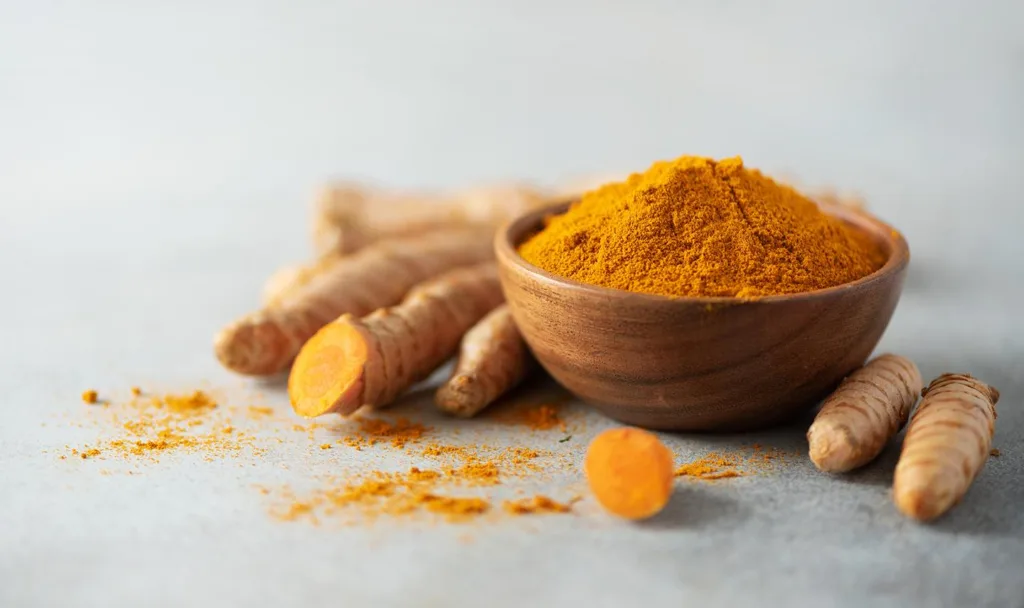Table of Contents
Dipping into an ice bath can feel like a plunge into the unknown – chilling, thrilling, and a little mysterious. It’s a topic surrounded by myths and misconceptions, particularly around the question: Can you get hypothermia from an ice bath?
Don’t worry! We’ll explore the facts about hypothermia, clarify the surprising health benefits of an ice dip, and navigate the precautions necessary to make your ice bath safe and invigorating. So, grab a towel, and let’s chill out with some cool knowledge.
Can you get hypothermia from an ice bath?
Curious about the chilling possibility of hypothermia from an ice bath? It’s a reasonable concern for anyone tempted by this cold wellness trend. Let’s dive into the essential facts, uncovering the reality of hypothermia risks associated with ice baths.
What is hypothermia?
Think of your body as a cozy, well-heated house. Hypothermia sneaks in when the heating system (your body’s ability to produce heat) gets overwhelmed by the cold outside (the environment). It’s when your body temperature drops below the comfy zone of 95°F (35°C) (1).
This chilling scenario isn’t limited to just frigid weather; factors like substance abuse, dehydration, and medical conditions such as diabetes or thyroid issues can also impair your body’s heating efficiency (1).
But it’s not just about feeling like an ice cube. Hypothermia can lead to serious health issues—heart and respiratory problems, and in severe cases, it could be life-threatening (2).
Hypothermia from an ice bath— Explained
So, can you get hypothermia from an ice bath?
The short answer is there is a chance. The long answer: Let’s start by clarifying what an ice bath is.
Ice bath is not your regular bath with rubber duckies and bubbles. It’s like a polar bear plunge—a tub filled with water and ice, usually chilling at around 50 to 59 degrees Fahrenheit (10°C – 15°C). Athletes love it, claiming it’s a magic potion for their sore muscles.
But here’s the frosty fact: while taking an ice bath, if you’re not careful with the temperature and how long you’re in there, your body can start an unscheduled audition for the role of an ice sculpture.
First, there’s the initial shock to your system – that gasp-worthy moment when your skin hits the cold water. It’s a natural response but can be dangerous, potentially drowning if you’re not careful.
Then, as you linger, your muscles near the surface start cooling down, which might sound like a relief for sore muscles but can weaken your body if you stay in too long.
The real concern is when the cold starts seeping deeper, risking hypothermia. This is where your body’s core temperature drops; things can get serious, overwhelming your body’s heat production and, in extreme cases, leading to unconsciousness or worse. It’s a condition that generally takes hold after about 30 minutes in really cold water (3).
However, not everyone’s reaction to an ice bath is the same. Factors like water movement and individual physical traits significantly influence one’s tolerance to cold.
And let’s not forget about the lesser-known non-freezing cold injuries, which, though less severe than hypothermia, can lead to lasting problems like sensitivity to cold and pain.
Surprising health benefits from ice bath
Diving into an ice bath may sound like a frosty dare, but it’s more than just a chill thrill. It’s a wellness trend backed by some surprising health benefits. Let’s unwrap these potential benefits:

Mood enhancement
When you immerse yourself in an ice bath, your body reacts to the cold by releasing endorphins. These are your body’s natural painkillers, known for their mood-boosting properties. This endorphin rush can lead to a sense of euphoria, almost like you’re on top of the world or at least on top of an iceberg.
Furthermore, it’s believed that this is not just due to the endorphins but also because of the cold’s impact on our brain’s neurochemistry. For example, the cold can increase the release of noradrenaline, a neurotransmitter that plays a key role in mood regulation (4).
But the mood enhancement from an ice bath isn’t just a quick hit of happiness but building resilience.
Regular exposure to cold water trains your mind to stay calm and composed in discomfort. This repeated act of overcoming the initial shock of the cold water can improve your stress response over time. You start to view challenges, both in and out of the bath, with a cooler head.
Researchers are focusing on these effects. Studies have shown that regular cold water immersion can decrease depression and anxiety symptoms (5, 6).
Reduce inflammation
Your body is a bustling city, and inflammation can be the traffic jam during rush hour. What an ice bath does is effectively clear the roads.
Cold temperatures slow the body’s physiological processes, like easing the foot off the gas pedal. This reduced speed helps calm the inflammatory response, especially after an intense workout or injury.
Studies have shown that cold exposure can significantly reduce the production of inflammatory markers in the body (5). For athletes and fitness enthusiasts, this means quicker recovery and less soreness, allowing them to bounce back faster and stronger.
Yet, another research perspective suggests that the anti-inflammatory benefits of plunging into cold water might not surpass those of simply staying active post-resistance training. This revelation stirs up a debate, casting on whether ice baths are the most effective anti-inflammatory tactic (6).
Reduce muscle soreness and boost recovery
Diving into an ice bath after a grueling workout might sound like an act of bravery (or madness), but it’s a smart move for muscle recovery.
When you take the plunge, the chilly water works its magic by reducing blood flow to your overworked muscles, which helps decrease inflammation, ease muscle soreness, and slow tissue breakdown. Once you leave your frosty spa, your body returns to its regular temperature. This isn’t just about getting cozy again; it’s a full-blown circulatory revamp.
As your body warms up, something amazing happens. The blood vessels that constricted in the cold now start to dilate. Suddenly, there’s a rush—a tidal wave of blood that floods your muscles, carrying a cocktail of oxygen and nutrients. It’s like a post-workout spa treatment for your muscles at a cellular level (5).
Furthermore, the reheated process of the body helps clear the metabolic waste from your muscles’ hard work, allowing waste products to be whisked away more efficiently.
Studies have shown that post-exercise ice baths can improve circulation, leading to faster recovery and reduced muscle soreness (7).
Strengthen immune system
As your body hits that cold water, it springs into action. The cold is a physical stressor that wakes your immune system, prompting it to be more alert and active.
When your body attempts to adapt and warm up, it produces more white blood cells. These cells are like the body’s internal security team, patrolling and defending against unwanted intruders like bacteria and viruses.
A study found that cold water swimmers had a more significant count of white blood cells, plasma norepinephrine, and other immune system markers. This means that those regular chilly dips could be reinforcing your body’s defense mechanisms (8).
Precautions and downsides
Venturing into the world of ice baths requires careful preparation and awareness of risks. Ice baths aren’t for everyone, and they pack more punch than you might expect. Whether you’re an avid athlete or just dipping your toes into this cool trend, understanding the precautions is key. Keep on reading to find the crucial do’s and don’ts to ensure your ice bath is both exhilarating and safe.
Who should not try ice baths?
Not everyone should jump into the chilly water:
- People with heart conditions: The sudden cold can spike your heart rate and blood pressure, which isn’t ideal if your heart is already working overtime.
- Pregnant women: The research world hasn’t yet dived deep enough into the effects of ice baths during pregnancy, so it’s best to play it safe and stick to warm showers.
- People with Raynaud’s disease or severe diabetes: These conditions make blood vessels more sensitive to temperature changes. So, an icy plunge could amplify symptoms of these conditions (9).
- Children and elderly: Their responses to extreme temperatures can be more intense, and an ice bath might just be too much of a good thing.
How to prepare for an ice bath?

Now let’s gear up with some essential know-how to make your ice bath both safe and invigorating:
- Setting the right temperature: For beginners, aim for a cool, not bone-chilling, range between 50 to 59 degrees Fahrenheit. It’s cold enough to feel the benefits without feeling like you’re turning into an ice sculpture.
- Duration and frequency: Start with short, manageable sessions – about 5 to 10 minutes. As for frequency, begin with once or twice a week. It’s enough to taste the cold without overwhelming your system.
- Acclimatization techniques: Your body needs to get used to this new, frosty environment. Begin with shorter durations and slightly warmer water, gradually lowering the temperature and increasing the time as you become more comfortable.
- Safety measures: Have a buddy or family member around, especially initially. They can ensure you stay safe as you explore these cold waters.
What should you avoid after an ice bath?
After an ice bath, your body’s humming with a newfound sense of vitality, but it’s also in a delicate state of recovery. Here’s what you need to sidestep post-plunge:
- Avoid intense physical activity: Your muscles are vulnerable and need time to recover after an ice bath. Jumping straight into intense activity could be jarring, giving them some time to ease back into the normal rhythm.
- Shun extreme heat: It might be tempting to jump from an ice bath into a steaming shower, but let’s pause there. This swift shift from cold to hot can be like a shock to your body’s system, potentially leading to thermal shock. Your blood vessels have just adapted to the cold; let them gently acclimatize back to normal temperatures.
- Hydration is key: Adequate hydration is crucial for recovery, as it helps eliminate metabolic waste from muscles and ensures your body functions optimally while it returns to its regular temperature.
Possible downsides of an ice bath
Besides hypothermia, diving into an ice bath might cause some other potential harm to your body. Let’s unpack the less-talked-about side of this chilly therapy:
- Nerve damage and frostbite: Love the idea of being a human popsicle? Think again. Extended or excessively chilly sessions could lead to nerve damage and even frostbite. Numbness and a stinging sensation are red flags.
- Mental health considerations: For some, the shock of cold water can induce stress and anxiety rather than the zen-like calm you might expect.
- Cardiovascular caution: The heart isn’t always used to with a sudden cold. In some cases, the shock of an ice bath can lead to cardiovascular complications like stroke or cardiac arrest, especially in those with pre-existing conditions (10).
- Risk of drowning: If you are doing an ice bath in a deep pool, there’s the risk of underwater loss of consciousness, turning into a potential drowning hazard.
How do you know if an ice bath is too cold?
Listen to your body. Usually, the temperature is around 50 to 59 degrees Fahrenheit (10°C – 15°C). However, if you feel intense pain or numbness, it’s too cold. Aim for a shiver, not a hypothermia audition.
Why do I feel sick after an ice bath?
This reaction could be due to the body’s shock response to the cold, potentially lowering blood pressure and causing nausea. To minimize this, try easing into the cold gradually and limit the time you soak in your icy bath.
Is it OK to take an ice bath every day?
Moderation is key. Daily dips can be intense for your body. Overexposure to cold can stress your body more than benefit it. Listen to your body. If it feels like too much, it probably is.
Should I warm myself up after a cold plunge?
Yes, you should do so. After an icy plunge, gentle movement or a warm blanket can ease you back into your normal state. Avoid hot showers immediately; let’s not shock the system twice.
Do ice baths boost testosterone?
There is no direct scientific proof that ice baths boost testosterone. Some say the cold stress might spike testosterone, but other research suggests ice baths may lower testosterone levels. The takeaway? Don’t count on ice baths for a testosterone boost.
Summary
So, can you get hypothermia from an ice bath? The risk is minimal, especially when you follow careful practices like setting the right temperature and easing into the chill. Ice baths can work wonders for mood, inflammation, and recovery, but they’re not a one-size-fits-all solution. If you have certain existing health issues or the cold feels too intense, it’s better to skip this. Now that you’re clued up, you can confidently decide whether to embrace this frosty wellness adventure or give it a pass. Stay cool and play it safe.

















Comments
0